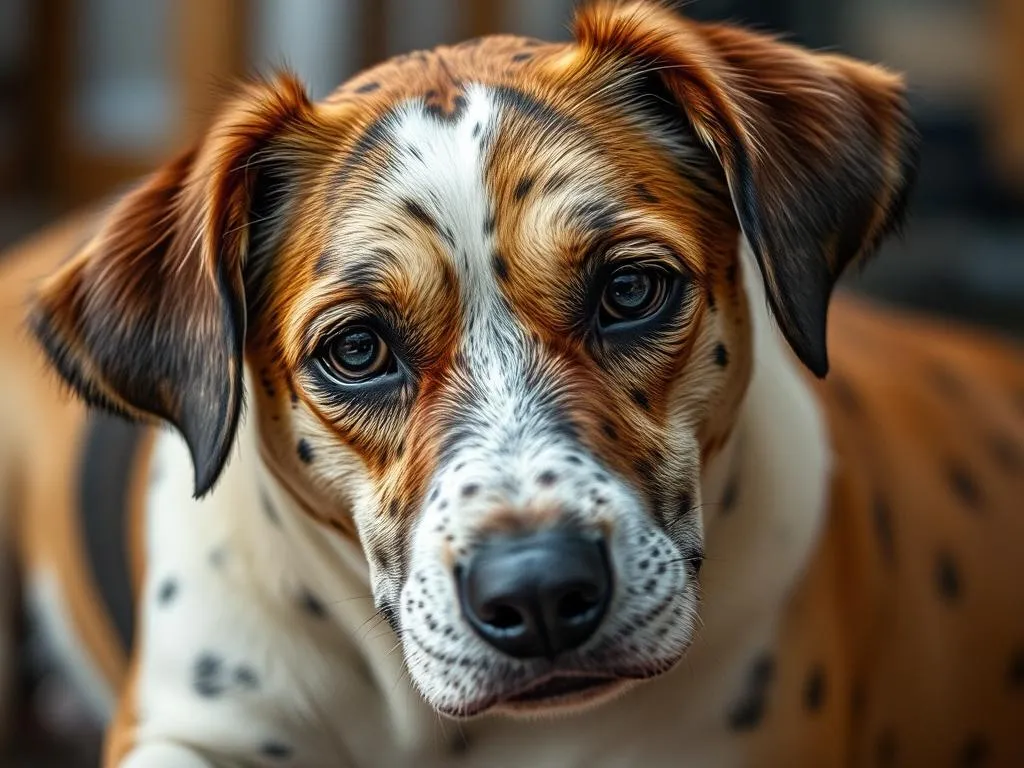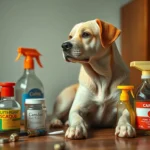
Introduction
Maintaining dog health is essential for ensuring a long, happy life for your furry companion. Just like humans, dogs can suffer from a range of health issues, and being proactive in their care is crucial for their overall well-being. Among the most common problems that dog owners encounter are fleas and hot spots. These issues not only cause discomfort but can lead to more severe health complications if left untreated.
In this article, we will explore effective strategies for managing fleas and hot spots on dogs. You will learn about the nature of these problems, how to prevent them, and what treatment options are available.
Understanding Fleas
What are Fleas?
Fleas are tiny, wingless insects that feed on the blood of mammals, including dogs. They are parasites that can quickly infest your home and become a significant nuisance. The flea lifecycle consists of several stages: egg, larva, pupa, and adult. An adult flea can lay up to 50 eggs per day, making it easy for infestations to escalate rapidly.
Why Fleas are a Problem for Dogs
Fleas can pose several health risks to dogs. One of the most serious is anemia, which can occur when a dog loses a significant amount of blood due to excessive flea feeding. Additionally, fleas can cause allergic reactions, leading to severe itching and discomfort. Some dogs may even develop flea allergy dermatitis, a condition that can result in secondary skin infections.
Signs of Flea Infestation
Recognizing a flea infestation early can prevent further complications. Common signs include:
- Scratching: Dogs may scratch excessively, especially around the neck and ears.
- Biting: Dogs may bite at their skin in an attempt to relieve itching.
- Flea Dirt: Small black specks resembling pepper on your dog’s skin or bedding indicate flea feces.
Understanding Hot Spots
What are Hot Spots?
Hot spots, or acute moist dermatitis, are localized areas of skin inflammation and infection. They often appear suddenly and can become quite painful for your dog. Hot spots are typically caused by a breach in the skin barrier, leading to the proliferation of bacteria.
Causes of Hot Spots
Several underlying issues can lead to the development of hot spots, including:
- Infections: Bacterial infections can arise from minor cuts or scratches.
- Allergies: Environmental or food allergies can cause itching, prompting your dog to scratch and lick excessively.
Signs and Symptoms of Hot Spots
To identify hot spots, look for the following signs:
- Redness: The affected area may appear inflamed and red.
- Moisture: Hot spots are often wet due to constant licking.
- Odor: An unpleasant smell may emanate from the affected area.
Prevention Strategies for Fleas
Regular Grooming
One of the best ways to prevent fleas is through regular grooming. Brushing your dog not only helps remove loose fur, but it can also dislodge any fleas or flea eggs. Bathing your dog regularly with a quality dog shampoo can also assist in controlling flea populations.
Recommended grooming tools include:
- Flea comb: Designed specifically to catch fleas and their eggs.
- Slicker brush: Helps remove tangles and loose hair.
Flea Prevention Products
Utilizing flea prevention products is essential in keeping your dog flea-free. Consider the following options:
- Topical treatments: These are applied directly to the skin and can provide long-lasting protection.
- Flea collars: These emit chemicals that repel fleas and can be effective for several months.
- Oral medications: Some medications kill fleas quickly and can help prevent infestations.
Home Environment Management
Managing your home environment is critical in preventing flea infestations. Here are some tips:
- Regular cleaning: Vacuum carpets, rugs, and furniture regularly to remove flea eggs and larvae.
- Washing bedding: Clean your dog’s bedding weekly in hot water to kill any fleas or eggs.
- Outdoor care: Keep your yard clean and trimmed, as fleas can thrive in overgrown areas.
Prevention Strategies for Hot Spots
Maintaining Skin Health
To prevent hot spots, maintaining your dog’s skin health is crucial. Regular baths with a hypoallergenic shampoo can help keep the skin clean and free from irritants. Avoid over-bathing, as it can strip the skin of its natural oils.
Diet and Nutrition
A balanced diet plays a vital role in skin health. Ensure your dog is eating high-quality food that contains essential fatty acids, which can promote healthy skin and coat. Consider consulting your veterinarian for dietary recommendations tailored to your dog’s specific needs.
Managing Allergies
Identifying and managing any allergies your dog may have is crucial in preventing hot spots. Regularly check for environmental allergens like pollen or dust, and consider food allergies by monitoring your dog’s reactions to specific ingredients.
Treatment for Fleas
Immediate Actions
If you discover fleas on your dog, act quickly:
- Give your dog a bath: Use a flea shampoo to kill fleas on contact.
- Utilize a flea comb: After bathing, comb through your dog’s fur to remove any remaining fleas and eggs.
Veterinary Treatments
In severe cases, or if your home is heavily infested, consult your veterinarian. They may prescribe stronger treatments like:
- Prescription topical treatments: These can be more effective than over-the-counter options.
- Injections: Some medications can provide long-term protection against fleas.
Home Remedies
If you prefer natural solutions, several home remedies can help manage fleas:
- Apple cider vinegar: Mix equal parts vinegar and water and spray on your dog’s coat to repel fleas.
- Diatomaceous earth: This natural powder can be sprinkled in your home to kill fleas by dehydrating them.
Treatment for Hot Spots
Immediate Care for Hot Spots
If you notice a hot spot on your dog, take the following steps:
- Clean the area: Use a mild antiseptic solution to clean the affected area.
- Prevent licking: Use an Elizabethan collar (cone) to prevent your dog from licking the hot spot, which can worsen the condition.
Veterinary Intervention
If the hot spot does not improve within a few days or if it worsens, contact your veterinarian. They may prescribe:
- Topical antibiotics: To reduce infection and inflammation.
- Oral medications: To control itching and promote healing.
Long-Term Care Strategies
After treating a hot spot, focus on long-term care to prevent recurrence:
- Regular grooming: Keep your dog’s coat clean and free of tangles.
- Monitor skin conditions: Keep an eye on any changes to your dog’s skin and consult a vet if necessary.
When to Seek Veterinary Help
Signs of Serious Infestation or Infection
If you notice any of the following signs, it’s time to consult your veterinarian:
- Severe scratching or biting: Persistent behaviors that could indicate a severe flea infestation.
- Worsening hot spots: Increased redness, swelling, or pus coming from the area.
- Unexplained lethargy: If your dog seems unusually tired or weak, it may need professional evaluation.
Regular Check-Ups
Routine veterinary check-ups are essential for preventive care. Your veterinarian can provide guidance on flea and hot spot management, as well as other health concerns.
Conclusion
In summary, managing fleas and hot spots on dogs requires a proactive approach that includes prevention, early detection, and effective treatment. Regular grooming, a balanced diet, and proper home care can significantly reduce the risk of these common issues. By staying vigilant and taking action at the first sign of trouble, you can ensure your dog remains healthy and happy.
Being proactive in dog health care not only improves your pet’s quality of life but also strengthens the bond between you and your furry friend. Implementing the strategies discussed here will help keep your dog free from fleas and hot spots, allowing for a long, fulfilling companionship.









